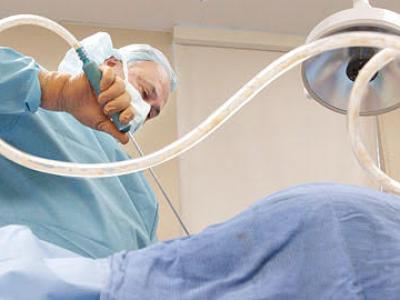Jul 2, 2010 (CIDRAP News) – The US Department of Agriculture (USDA) has formally adopted tougher safety standards for ground beef used in the National School Lunch program, a move that was first proposed in May and was originally spurred by a newspaper investigative report last December.
USDA Secretary Tom Vilsack announced yesterday the new standards for ground beef bought by the Agricultural Marketing Service (AMS) for federal food and nutrition assistance programs, including the school lunch program.
"The new standards guarantee our purchases are in line with major private-sector buyers of ground beef," Vilsack said. "We will continue to apply the best scientific knowledge to increase the safety across the board of our nutritional programs."
The standards tighten microbiological testing protocols, tighten the "microbiological upper specification and critical limits," increase the sampling frequency for finished products to every 15 minutes, and add more criteria for rejecting beef trimmings used to make ground beef, the USDA said. The standards also maintain the existing "zero tolerance" policy for Escherichia coli O157:H7 and Salmonella.
Scrutiny of the standards was spurred by a USA Today story in December that said they were weaker than those used by major fast-food chains such as McDonald's and Burger King. The report said the USDA in recent years had provided schools with millions of pounds of beef and chicken that wouldn't meet the standards of fast-food chains.
The story said the USDA standards for meat sent to schools were tougher than the minimum requirements for meat sold in grocery stores, but had fallen behind those used by the fast-food industry and more selective retailers.
Vilsack said the tighter standards are part of a series of initiatives launched in February to provide safer food for the school lunch and other nutrition programs. They are the product of a joint review by the USDA Food Safety and Inspection Service (FSIS) and the Agricultural Research Service (ARS).
The standards underwent some revisions in response to comments from the public, the FSIS, and the ARS after the draft version was released in May, the USDA said. The announcement did not specify those changes.
The tightened rules won praise from the U.S. Public Interest Research Group (U.S. PIRG) when the draft was unveiled in May.
"By raising the bar for ground beef served in schools and increasing the frequency of testing for contamination, the USDA is taking some of the mystery out of the meat on the lunch tray," said Liz Hitchcock, the group's public health advocate. "This is an important first step, and we look forward to continued work with Congress and the Obama administration to make all food in school cafeterias safer."
Meanwhile, a National Academy of Sciences (NAS) review of the AMS ground beef purchase requirements is under way. In his May announcement, Vilsack said the NAS is examining the validity of current technical requirements and methods and how they measure up against recognized industry-leading programs.
See also:
Jul 1 USDA press release
Dec 9, 2009, USA Today report

















